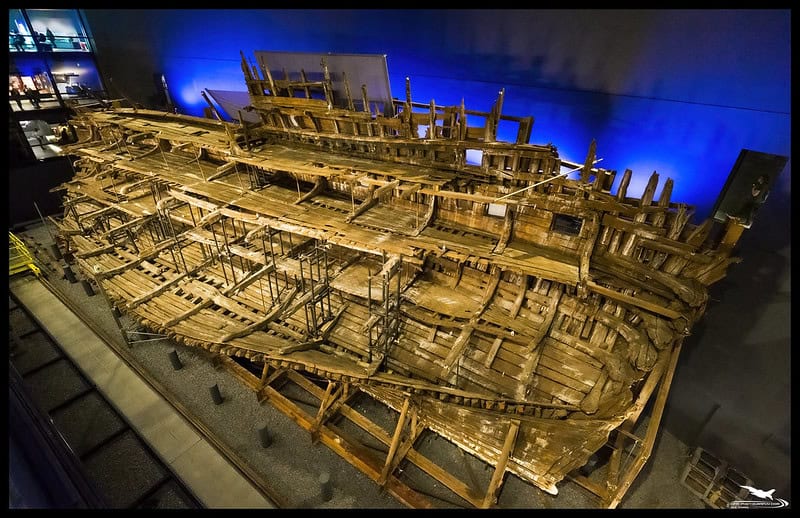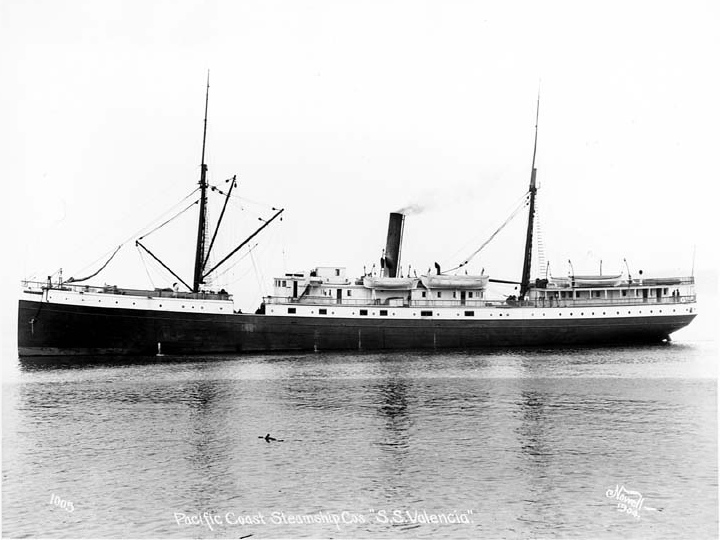Throughout history, there have been countless stories of ships that vanished without a trace, leaving behind only questions and speculation. These legendary disappearances have sparked intrigue, mystery, and countless theories, but many remain unsolved to this day. Whether it’s a mysterious ghost ship, a fully intact vessel with no crew, or a disappearance in one of the world’s most perilous waters, these maritime mysteries continue to captivate the imagination. Here are some of the most famous ships that disappeared without explanation, each with a story that remains as puzzling as ever.
The Mary Celeste

In 1872, the Mary Celeste, a merchant brigantine, was discovered adrift in the Atlantic Ocean. The ship was fully intact, with its cargo, food, and water untouched, yet the crew was gone without a trace. The last known entry in its log was recorded 10 days before its discovery. The crew consisted of Captain Benjamin Briggs, his family, and seven other crew members. There were no signs of violence, and the ship was in no immediate danger of sinking. Various theories have emerged, ranging from piracy to a sudden mutiny or even a natural disaster like a waterspout. Despite investigations, no conclusive explanation has ever surfaced, making it one of the most famous maritime mysteries of all time. Some speculate that the crew might have abandoned ship due to a possible threat they thought was imminent, but no one can say for sure.
The Flying Dutchman

The Flying Dutchman is a legendary ghost ship that has haunted maritime folklore for centuries. According to the tale, its crew is condemned to sail the seas forever, unable to dock or set anchor. The legend states that in the 17th century, its captain, Hendrick van der Decken, was cursed after swearing to round the Cape of Good Hope during a violent storm. Since then, sightings of the ship have been reported, with the eerie apparition often spotted by sailors off the coast of South Africa. The crew was never seen again, and it is said that those who encounter the Flying Dutchman are doomed to disaster. In modern times, there have been claims of sightings, though none have been verified by scientific evidence. Many believe its disappearance is an allegory for the dangers of defiance against nature’s forces and the harsh reality of maritime life.
The SS Waratah

The SS Waratah, a British passenger liner, disappeared without a trace in 1909 while en route from Sydney to Durban, South Africa. The ship, which had 211 people on board, including passengers and crew, was last seen near the coast of South Africa’s Eastern Cape. Despite favorable weather conditions, the vessel simply vanished from radar and radio contact. The disappearance sparked widespread speculation, with some believing it was lost due to a freak wave, while others suspected foul play. Its final distress signal was received on the morning of July 27th, but no wreckage was ever found, despite extensive searches. Over the years, various theories have emerged, including the possibility of a sudden and violent storm, a navigational error, or mechanical failure. Its mystery remains unsolved, with a lack of concrete evidence to determine its fate.
The USS Cyclops

The USS Cyclops was a massive naval auxiliary ship that disappeared without a trace in 1918 during a voyage from Barbados to the United States. With 309 people on board, it was the largest of its class and had previously been a reliable vessel in the U.S. Navy. It sent no distress signals, and its disappearance remains one of the largest non-combat losses in U.S. naval history. Several theories suggest that it might have encountered a German U-boat, though there is no solid evidence of this. Others believe that a structural failure, possibly related to its overburdened load of manganese ore, caused the ship to sink. Despite extensive search efforts, no wreckage was ever found. Its fate remains one of the great mysteries of the early 20th century, and its disappearance has sparked theories ranging from sabotage to natural disaster.
The HMS Erebus

The HMS Erebus, along with its sister ship the HMS Terror, was part of the ill-fated 1845 Franklin Expedition to find the Northwest Passage. The two ships became icebound in the Canadian Arctic, and all 129 men aboard the expedition perished. The Erebus was last seen in 1845, and despite numerous rescue missions, no traces of the ships or crew were found for over a century. In the 1980s, theories emerged that the crew had resorted to cannibalism in an attempt to survive the harsh Arctic conditions. In 2014, Canadian archaeologists confirmed the discovery of the Erebus’s wreck, but the cause of the expedition’s disastrous end remains unclear. Some experts believe that the ships became trapped in ice for several years, while others suggest that lead poisoning from its water supply may have contributed to the crew’s demise. This discovery has provided some closure, but many questions about the expedition’s final days remain unanswered.
The MV Joyita

In 1955, the MV Joyita, a merchant vessel, disappeared in the South Pacific, leaving behind only a mystery. The ship, which was carrying 25 people, including passengers and crew, was found adrift 200 miles from its intended route between Samoa and Fiji. When discovered, it was partially flooded, but there were no signs of a struggle or violence. The crew and passengers were gone, and despite an extensive search, no bodies or clues were ever found. One of the most puzzling aspects of the disappearance was that its distress signals had been activated, yet no one had come to its aid. Theories about the disappearance have ranged from piracy to an accidental fire or mechanical failure. It remains one of the most baffling maritime disappearances of the 20th century.
The Mary Rose

The Mary Rose, a Tudor warship that served King Henry VIII, sank in 1545 during a battle against the French fleet. While it was known to have been hit by enemy cannonballs, the reasons for its sudden sinking are unclear. It was carrying over 400 men, including soldiers, sailors, and officers, and many of them perished when it went down. Some reports suggest that the vessel capsized due to a shift in weight when the crew’s attention was diverted to the enemy fleet. Others believe that its gun ports were opened too early, allowing water to flood the lower decks. After its sinking, the wreck remained lost for centuries before it was finally discovered in 1971. Today, it is on display in a museum in Portsmouth, England, where ongoing research continues to shed light on the causes of its mysterious loss.
The SS El Faro

The SS El Faro was a U.S. merchant ship that sank in 2015 after encountering Hurricane Joaquin while traveling from Florida to Puerto Rico. The ship, which had 33 people aboard, was last heard from on October 1st, when the captain reported that it had lost propulsion due to the storm. Despite efforts to locate the vessel, the crew and ship were presumed lost. A subsequent investigation revealed that its owner had been aware of the storm’s severity but failed to take appropriate action to avoid it. The wreckage was discovered 15,000 feet below the surface of the ocean, and its black box revealed that the crew had tried to save the ship by steering it into the storm. Its disappearance was a tragic reminder of the dangers faced by modern sailors and has led to changes in safety regulations for maritime vessels. However, questions remain about the decisions made in the days leading up to its sinking.
The Ryou-Un Maru

The Ryou-Un Maru, a Japanese fishing vessel, became one of the most famous ghost ships after being abandoned during the 2011 tsunami. After the disaster, it was left adrift in the Pacific Ocean, and it drifted across the seas for several years before being discovered by Canadian and U.S. authorities. Despite its eerie journey, it posed no immediate threat, as it was empty and contained only debris. It was eventually destroyed by a U.S. Navy missile in 2013 after it was deemed a hazard to navigation. Its disappearance and later destruction highlighted the long-term impact of natural disasters on oceanic traffic. In some ways, the ghost ship’s story is a reminder of the destructive power of the 2011 tsunami, which sent thousands of ships and objects adrift. Though it was a small incident in comparison to others, its journey captured the public’s imagination and remained in the news for years.
The SS Valencia

The SS Valencia, an American passenger steamer, vanished under chilling circumstances in 1906 off the coast of Vancouver Island, Canada. Caught in rough seas and fog, the ship struck a reef, and chaos ensued as lifeboats were launched haphazardly. Tragically, only 37 of the 173 passengers and crew survived, with most of the lifeboats capsizing or disappearing entirely. Strangely, years later, one of the missing lifeboats was found in a nearby cave, perfectly preserved, but no bodies or other evidence were recovered. The disappearance fueled rumors of ghostly sightings of the ship and its crew. The treacherous waters near where it sank have since been dubbed the “Graveyard of the Pacific.” Despite recovery efforts, the full story of what happened to the missing lifeboats remains unknown. Its haunting tale continues to capture the imagination of maritime enthusiasts and ghost story lovers alike.
This article originally appeared on Rarest.org.
More from Rarest.org
17 Exotic Beetles with Remarkable Coloration and Design

Beetles come in a wide variety of vibrant colors and intricate designs. These remarkable insects, found in diverse habitats, often captivate with their exotic appearances. Read More.
15 Rare and Exotic Amphibians Thriving in Remote Jungles

Deep within the world’s most remote jungles, a diverse range of rare and exotic amphibians thrive, often hidden from human view. These remarkable creatures have evolved unique traits to survive in their specific environments, from vibrant colors that ward off predators to extraordinary abilities like gliding or regenerating limbs. Read More.
15 Stunning Big Cats Roaming the World`s Most Beautiful Landscapes

Big cats are some of the most awe-inspiring creatures on the planet, roaming a variety of stunning landscapes across the globe. From the dense rainforests of the Amazon to the snowy peaks of the Himalayas, these majestic predators have adapted to thrive in some of the world’s most beautiful and diverse environments. Read More.
